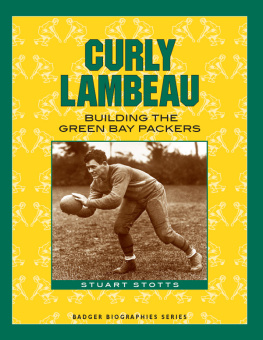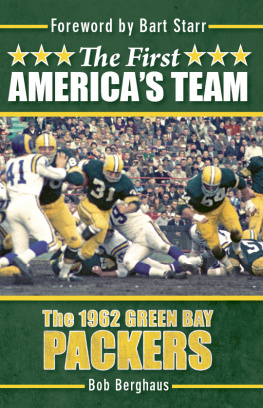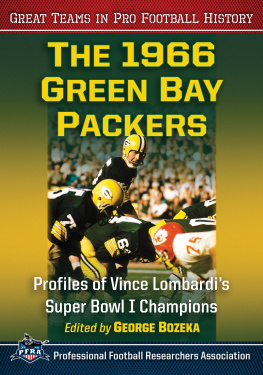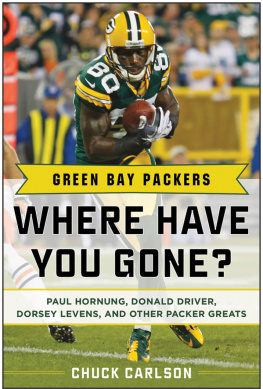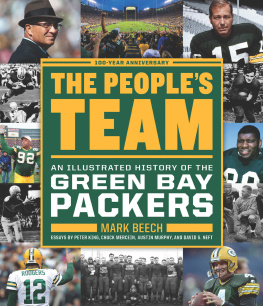CURLY LAMBEAU

Other Badger Biographies
Belle and Bob La Follette: Partners in Politics
Blue Jenkins: Working for Workers
Caroline Quarlls and the Underground Railroad
Casper Jaggi: Master Swiss Cheese Maker
Cindy Bentley: Spirit of a Champion
Cordelia Harvey: Civil War Angel
Curly Lambeau: Building the Green Bay Packers
Dr. Kate: Angel on Snowshoes
Father Groppi: Marching for Civil Rights
Frank Lloyd Wright and His New American Architecture
Gaylord Nelson: Champion for Our Earth
Harley and the Davidsons: Motorcycle Legends
Joyce Westerman: Baseball Hero
Les Paul: Guitar Wizard
Lucius Fairchild: Civil War Hero
Mai Yas Long Journey
Mary Nohl: A Lifetime in Art
Mountain Wolf Woman: A Ho-Chunk Girlhood
Ole Evinrude and His Outboard Motor
A Recipe for Success: Lizzie Kander and Her Cookbook
Richard Bong: World War II: Flying Ace
Tents, Tigers, and the Ringling Brothers

CURLY LAMBEAU:
BUILDING THE
GREEN BAY PACKERS
STUART STOTTS
WISCONSIN HISTORICAL SOCIETY PRESS
Published by the Wisconsin Historical Society Press
2007 by State Historical Society of Wisconsin
E-book edition 2014
Publication of this book was made possible, in part, by gifts from the following donors:
Mrs. Harvey E. Vick of Milwaukee, Wisconsin
Green Bay Packers
For permission to reuse material from Curly Lambeau: Building the Green Bay Packers (ISBN 978-0-87020-389-3; e-book ISBN 978-0-87020-524-8), please access www.copyright.com or contact the Copyright Clearance Center, Inc. (CCC), 222 Rosewood Drive, Danvers, MA 01923, 978-750-8400. CCC is a not-for-profit organization that provides licenses and registration for a variety of users.
www.wisconsin history. org
Photographs identified with PH, WHi, or WHS are from the Societys collections;address requests to reproduce these photos to the Visual Materials Archivist at Wisconsin Historical Society, 816 State Street, Madison, WI 53706.
Designed by Jill Bremigan
11 10 09 08 07 1 2 3 4 5
The Library of Congress has cataloged the printed edition as follows:
Stotts, Stuart, 1957
Curly Lambeau : building the Green Bay Packers / Stuart Stotts.
p. cm. -- (Badger biographies)
Includes bibliographical references and index.
ISBN 978-0-87020-389-3 (pbk.)
1. Lambeau, Curly, 1898-1965. 2. Green Bay Packers (Football team)--History. 3. Football coaches--United States--Biography. 4. Football--United States--History. I. Title.
GV939.L25S86 2007
796.332640977561--dc22
2007026334
Front cover photo: courtesy of the Neville Public Museum of Brown County

Contents
Salt Sack Football

Lambeau Field is one of the great landmarks in Green Bay. Loyal fans know its the home of the Green Bay Packers. But where did the name Lambeau come from? The man most responsible for making the Packers a professional football team and for keeping the team in the small city of Green Bay was Curly Lambeau.
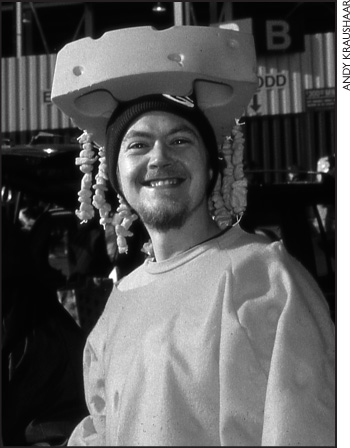
Modern Packer fans often wear foam cheesehead hats.
When Curly Lambeau was a boy in the early 1900s, he and his friends played with a small burlap salt sack stuffed with sand, leaves, and pebbles. They couldnt afford a ball. They kicked the filled sack back and forth and tried to run past each other with it. Adding gravel to the sack made it easier to throw accurately. In the fall they gathered in the vacant lots and parks of Green Bay to choose teams and engage in rough-and-tumble games of what was then still a fairly new and unknown sportfootball.
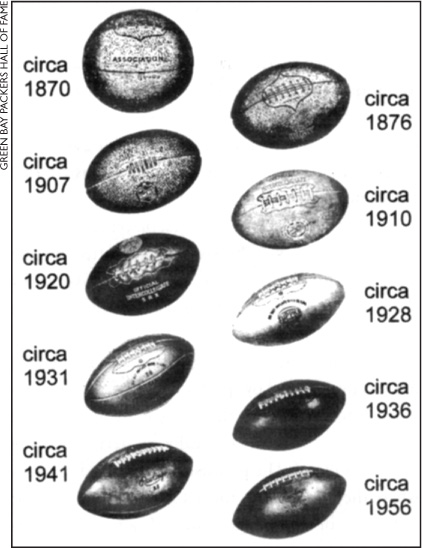
The shape of the football has changed over time. (circa means about)
Of course, the ball was made from a sack. And its size and shape didnt resemble a modern American football either. The boys sack-ball was more like a modern soccer ball in size, though not as rounded. This made it difficult to throw very far.
. It was unusual for teams to pass more than 2 or 3 times in a game. Teams gained yards by blocking and running as they pounded through the defensive line of the other team. This heavy body contact gave rise to the phrase 3 yards and a cloud of dust to describe the old-fashioned style of playing.
Fred Hulbert and Town Teams
A man named Fred Hulbert first organized community football in Green Bay in 1895. For the next 25 years, town teams and neighborhood teams competed. Team members changed every year as players came and went. The schedules were casual. Games were often canceled or scheduled at the last minute. Many communities all over Wisconsin had such town teams that would challenge each other to games.
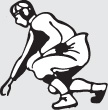
European immigrant community in Green Bay at the time.
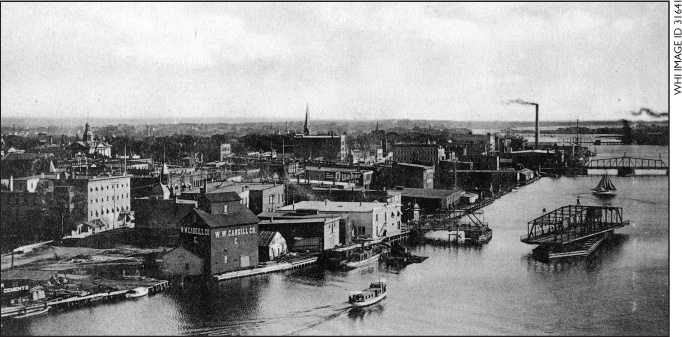
Green Bay was very different when Curly was born in 1898 than it is today. This shot of the city dates from around 1900.
Green Bays Immigrant
Population in the 1900s
In the 1900s, Green Bay was a center for 3 industries: papermaking, cheese making, and large meatpacking. Many who lived and worked there were fairly recent immigrants from Germany, Poland, Ireland, and Belgium, just like Curlys family. People were, by and large, citizens.
Curlys family first lived at 615 North Irwin Street in a simple red brick house. Then the Lambeaus moved to a little 2-story house at 1205 Cherry Street, where Curly shared a bedroom with his brothers, Raymond and Oliver. His sister, Beatrice, had her own room. Marcel Lambeau was in the construction business. Although the family was not poor, they did have to be careful with their money.
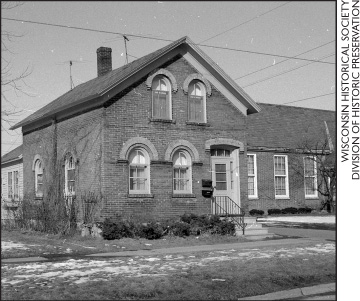
The Lambeau family lived in this simple red brick house on Irwin Street before moving to Cherry Street.
Curly was a large, solid, strong boy. Even then, he oozed confidence, especially when it came to athletics. He played football from an early age. He watched every game he could, wherever the game was played: at a high school, a city park, or a vacant lot.
In eighth grade, Curly joined his first organized team at Whitney Grade School. He led the team to victory over the East High freshman team. But Curly also broke his ankle during the season. It was the only serious injury he ever received in his entire career as a player.

